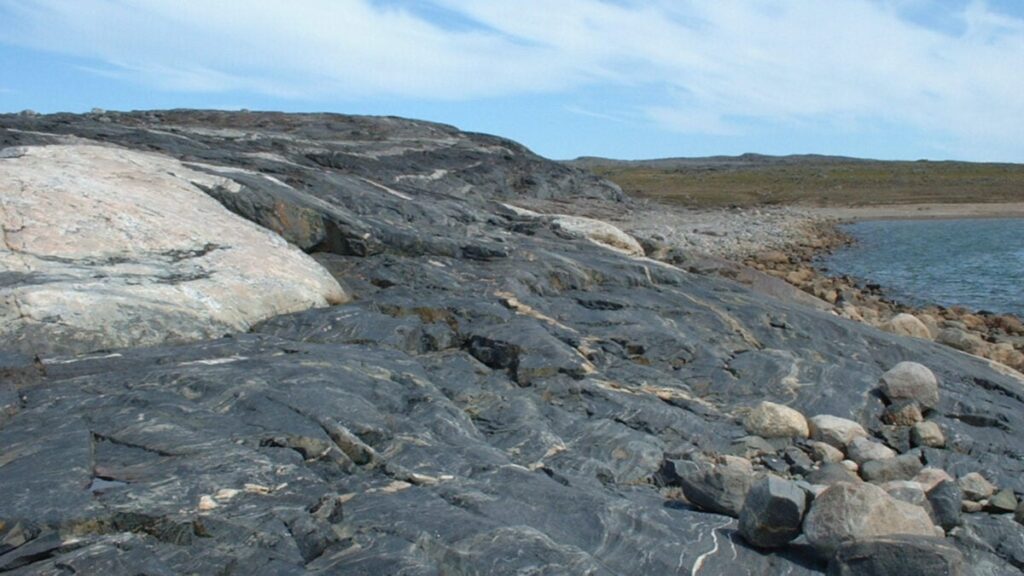
Due to the relentless movement of Earth’s tectonic plates, our planet’s crust is in a constant state of renewal, making ancient rocks and minerals a rare find. This geological recycling is a source of frustration for geologists who seek to understand the planet’s earliest days. Surface-level Hadean rocks, those older than 4.03 billion years, hold the potential to unlock significant insights into the formative stages of Earth’s 4.5-billion-year history.
In a groundbreaking study published today in the journal Early Earth, researchers from Canada and France propose that the Nuvvuagittuq Greenstone Belt (NGB) in northeastern Canada may contain Hadean rocks dating back approximately 4.16 billion years. While this dating differs from previous studies that controversially suggested the rocks could be as old as 4.3 billion years, it supports the broader hypothesis that the NGB may contain remnants of Earth’s primordial crust. If confirmed, these findings could profoundly impact our understanding of the planet’s ancient history.
Unraveling the Mysteries of Earth’s Oldest Rocks
“Many questions remain regarding Earth’s earliest crust owing to the rarity of Hadean (>4.03 billion-year-old) rocks and minerals. The Nuvvuagittuq Greenstone Belt (NGB) in Canada may be the only known remnant of Hadean crust, although its age is debated, ranging from ≥3.75 to 4.3 billion years old,” the researchers, including Jonathan O’Neil from the University of Ottawa’s Department of Earth and Environmental Sciences, explained in the study.
One of the primary methods for dating rocks is radiometric dating, which involves measuring the radioactive decay of isotopes, or different versions of elements. The claim that some NGB rocks might be up to 4.3 billion years old has sparked controversy. Some scientists argue that the isotopic data used for this estimate could be skewed by “later geological mixing processes,” according to a statement from the American Association for the Advancement of Science.
New Insights from Metagabbroic Intrusions
In their latest research, O’Neil and his colleagues focused on ancient rocks in the NGB known as metagabbroic intrusions. These intrusions cut through older basaltic rocks, a feature that allowed the researchers to use various isotopic analyses to establish a lower age limit for this ancient material. Specifically, the decay of samarium isotopes into neodymium isotopes consistently indicated a minimum age of 4.16 billion years.
“The decay of samarium isotopes into neodymium isotopes consistently pointed to a minimum age of 4.16 billion years,” the study reveals.
The Broader Implications of Ancient Rock Dating
The debate over the true age of the NGB is unlikely to be resolved soon. This study follows other recent research on prehistoric footprints, which also faced scrutiny over its dating techniques. Both studies underscore the critical importance of evaluating dating methods, especially those that could have significant historical implications for humanity and our understanding of Earth.
According to experts, the ability to accurately date such ancient rocks is crucial for piecing together the history of our planet. “Understanding the age and formation of these rocks can provide a window into the conditions on early Earth, potentially offering clues about how life might have begun,” said Dr. Emily Thompson, a geologist not involved in the study.
Looking Ahead: The Quest for Earth’s Ancient Secrets
The discovery of potentially Hadean rocks in the NGB is a tantalizing prospect for geologists and historians alike. As researchers continue to refine their methods and debate their findings, the quest to unlock the secrets of Earth’s earliest days persists. Future studies may focus on corroborating these findings with additional evidence or exploring other ancient rock formations around the world.
Ultimately, the pursuit of understanding Earth’s ancient history is more than an academic exercise; it is a journey to comprehend the origins of our planet and the life it sustains. As new techniques emerge and technologies advance, the hope is that more of Earth’s ancient mysteries will be revealed, offering a clearer picture of the world as it once was.






